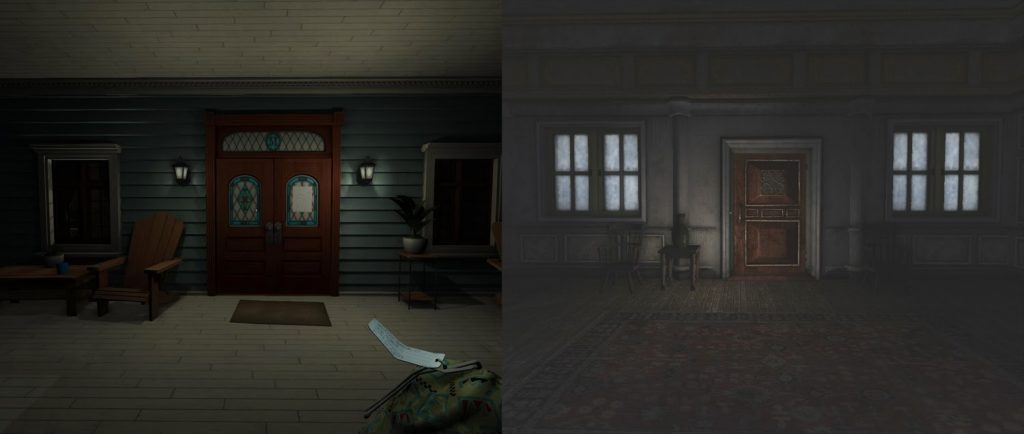From time to time we get requests from people who want to license our HPL2 engine in order to make a commercial game. This is quite flattering, but the answer is always “no”. Our reply is to simply state that there is no documentation, we do not have time for support and they are better off using Unity or UDK anyway. In all honesty, we also do not have any high hopes of these projects finishing at all. Choosing an engine is one of the very first decisions made when starting the development of a game, and very few games, especially indie ones, go beyond a pre-production phase.
So it came as quite a surprise for me when I learned that Steve Gaynor, one of the people behind the phenomenal Gone Home, had sent this sort of mail to us! I met him briefly at GDC this spring, and was quite amazed to hear that the very first prototype of the game was made in HPL2. He had mailed and asked if the engine would be possible to use for a commercial game, and got the usual response. Fortunately this did not discourage the team from continuing. It also seems like they took our advice since the final version of Gone Home is made in Unity. I really wanted to see the level, and told Steve that I would mail him when I got back from GDC. But as always other stuff happened and I just pushed the thing forward. I swear that I had “Mail Steve about Amnesia: Gone Home” written on my todo list for 6 months!
Then Steve mailed me for totally different reasons, and I decided I really had to get this Gone Home prototype over with. He scavenged his files and managed to dig out the map. This was during the whole SOMA teaser campaign and I did not have time to look right away. A few days ago things finally settled down a bit and it was time to take a look.
The prototype is quite short and very basic; it is really more of a proof of concept. But it still gives a very good sense of the game, and having played the full version, I could recognize quite a bit. It does feel a bit awkward to play an early test like this though. Gone Home is a very personal game, and playing this prototype felt like a meta version of the game’s voyeuristic thematics.
We got Steve’s mail regarding HPL2 engine on the 14th of January 2012 so this prototype must have been made before that. This means the prototype is over a year and half older than the final game and made almost 5 months before the game was announced. My guess it is the first time that the ideas for the game got some sort of substance.
Here is a few comparisons between the prototype and the final game. Prototype is on the right (as if you couldn’t tell…):

The game opening is in the exact same place, on the porch of the house. There is even still a chair and small table with a pot next to the front door!

The first key is still found hidden under an ornament! I think this is a very neat puzzle as it explains to the player that it is worthwhile to do some extra scavenging and acts as a sort of unobtrusive tutorial. So it is not that incredible that it stuck so long. But still, very fun to see this intact.

And here is the first view when entering the house. It is not visible from the screen, but both versions have paths leading both to the left and to the right, giving the player three different ways to start their exploration. Like the key puzzle, there are good reasons this stuck, but it is still awesome to see it this similar.
Taken together, the prototype is really incredibly close to the final game.
In case you are not amazed by the similarities in such an old prototype, check how Amnesia looked at the end of 2008 (a few months less than 2 years before release):
I also have to note the awesome handy work on this toilet:

If you want to try the level out yourself, you can download it from here:
http://unbirthgame.com/GoneHome.rar
Just extract the file in the “custom_stories” directory in Amnesia: The Dark Descent, start the game, press “Custom Story” and select and start “Test Game”.
Finally, if you have not played Gone Home, do so now! It is a really unique and emotional experience that is a must for anybody interesting in videogame storytelling. You can get it here:
Lots of thanks for Steve Gaynor for saving this lovely slice of history and letting me (and all of you now) try it out!